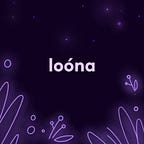Which colour palettes are good for calmness and sleep?
Light is the most important external factor influencing sleep. It doesn’t just help us to visualise the world around us, it is also thought to influence many non-visual biological processes, such as ovulation, the immune system, metabolism, mental health, and regulation of the sleep/wake cycle. Yet, we still have a lot to discover about how different types of light influence sleep in different ways. For example, researchers have only just begun to uncover the effect that different colours of light have on our sleep.
Colours are different wavelengths of light. Violet light has the shortest wavelength and red light has the longest wavelength. Emerging research is revealing a deeper and more complex relationship between colours of light and our brain activity and behaviour. These findings have ramifications for our everyday use of artificial light and the application of light therapy to sleep disorders in medical practice.
This article will explore what we know about the impact of light, particularly different colours of light, on our sleep and what this may mean for the lighting of the future.
What do we know about the impact of light on our sleep?
For a while we have known that light impacts our sleep in 2 key ways: (1) by suppressing the production of melatonin, our sleep hormone, and regulating the circadian rhythm, our biological clock that controls our sleep/wake cycle among other things; and (2) by directly promoting alertness.
However, new research suggests that a photopigment called melanopsin plays a primary role in the non-visual effects of light on our bodies. Melanopsin, unlike the other photoreceptors, sends all non-visual light information to the brain, including a measurement of environmental brightness. By exposing groups to different types of light and then assessing their performance on non-visual tasks, studies have found that the alerting impact of light occurs through the activation of melanopsin. This helps to explain the increased alertness and decreased sleepiness in the visually-impaired when they are exposed to light.
These studies into melanopsin have shown that there is a third way in which light regulates sleep. Due to the sensitivity of melanopsin to blue light, these studies have also illuminated (if you’ll pardon the pun!) the influence of different wavelengths in the sleep-inducing effects of light.
Does the colour of the light make a difference?
By exposing mice to violet, blue and green light, researchers found that blue light promotes alertness in these nocturnal mammals as it does in diurnal humans. Green light, on the other hand, induced sleep in the mice, whereas it promotes alertness in humans. The opposing effects on sleep and arousal caused by exposure to different colours of light led the researchers to the proposition that different colours of light activate different pathways in the brain.
When comparing 8 different colours of light as well as darkness, researchers found that people fall asleep quickest when exposed to their preferred colour of light. When analysing changes in heart rate, these researchers also revealed that exposure to the preferred colour of light activated the parasympathetic nervous system and contributed to a more stabilised state, which is what happens during sleep, particularly non-rapid eye movement (NREM) sleep. This indicates that exposure to certain colours of light may help to treat insomnia, particularly when it is triggered by stress, and could improve sleep quality.
Blue light is often considered to be particularly problematic when it comes to sleep. It has been shown to suppress melatonin levels, which is helpful to maintain alertness during the daytime but can prevent us from falling asleep at night time. This is why experts recommend that we limit our exposure to artificial blue light in the evenings by blocking out these light sources and excluding blue light-emitting tech devices from the bedroom.
These adaptations to our sleeping environment may be especially important for certain groups of people. For example, studies have shown that young children are more susceptible to the sleep-inhibiting impacts of blue light. Those of us ‘night owls’ who have been diagnosed with a sleep disorder called delayed sleep-wake phase disorder (DSWPD) also appear to be more sensitive to the effects of light on sleep.
The disruption that artificial light can cause to our circadian rhythm has worrying implications for mental health. However, artificial light can also be used as an effective treatment for mood disorders. For example, Seasonal Affective Disorder (SAD) is a type of depression caused by a lack of exposure to sunlight and can be managed through the use of artificial light sources when sunlight is less available.
Whereas exposure to blue light has been linked to increased alertness and better cognitive performance during the daytime, exposure to red light in the evening has been linked to better sleep in teenagers. There is also growing evidence to support the notion that red light has a calming and antidepressant effect. As a result, some smart phones are being designed with the option to increase the warm tones emitted by their screens while some street lamps are similarly increasing the wavelength of their light in the evenings.
To fully utilise the benefits and avoid the adverse impacts of light, we need to look beyond just the wavelength of the light and consider the intensity of the light, the duration and timing of exposure as well as personal histories of light exposure.
